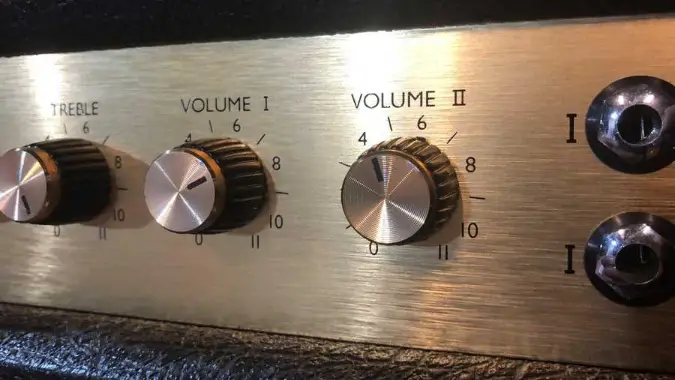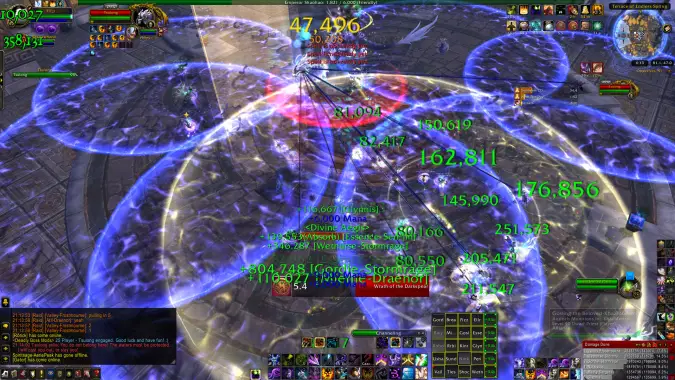Gaming can be a challenge when you experience overstimulation — but there are ways to reduce its effects

Though our understanding of sensation, stimuli, and pain is mostly in the trial-and-error stage still, the differences between boring, interesting, overstimulating, or painful are technically only a matter of intensity and degree. It’s known that nerves are involved, and those nerves feed sensation to the brain that interprets that data and decides “good sensation” or “bad sensation” — but there’s no agreement on how many senses we have, and the commonly understood “five senses” approach grossly understates the situation. While not typically included in the base count, most of us are familiar with the senses of hunger, time passing, movement or falling, temperature, of being followed, and so forth.
When it comes to digital gaming, we are attempting to simulate whole worlds through auditory and visual stimulation alone, and for some people this can lead to an overload of those senses. Certain visual or aural patters in games can cause the brain to think it’s moving or falling, or that there’s something behind you. I remember trying to lead the Hans and Franz fight in World of Warcraft’s Blackrock Foundry and having to keep a bucket next to my chair, as well as needing to get up and go for a walk during wipe recovery — in-game conveyor belts are my kryptonite. What will trigger overstimulation will vary from person to person, from day to day. When people think of gaming causing discomfort, they typically think of physical issues such as carpal tunnel or other repetitive motion soft-tissue injuries. But sensory processing issues are so common it’s easy for us to almost accept them as normal.

Personally, I have suffered from motion sickness and other stimuli-processing issues my entire life — visual triggers can leave me feeling nauseated, for example. After I started to share a workspace with my partner, I learned that wearing noise-cancelling headphones for an extended period can trigger my motion sickness. Of course, there are other conditions or experiences that can lead to overstimulation. In the same way that some people see a reduced color gamut, some people have tetrachromia, where they have an extra set of cones for processing color and can see a broader range of color and be more sensitive to them. I also experience moderate misophonia, which is where certain noises can irritate you intensely to the point of distress or rage. My other half likes to watch movies or listen to music turned up loud — even being at the other end of the house can be too much some days, and I find particular noises are worse than others and can almost send me retching within minutes.
Have you ever been playing a game, probably in the middle of a complex encounter, and realized it has gone completely silent? That’s the game’s sound channels being overwhelmed with too many signals and muting itself until it can sort things out. People who get overwhelmed by excessive stimuli can experience a similar situation; but instead of their game client going silent, their brain kind of “freezes” while it resets. One way this can be expressed is by seizures, including vacant seizures and Grand Mal seizures (e.g., like those caused by photosensitive epilepsy).
Different people react to over stimulation in different ways — some may become laser focused on the task at hand, some may find they tune out entirely, and some may lock up like a computer crashing.

Some ways to help avoid overstimulation
Our understanding of what causes some people to experience overstimulation when others are fine is fairly poor. For some people, it’s linked to being neurodivergent in other ways, such as having ADHD, epilepsy, or some other sensory processing sensitivity — someone who falls under such a category may sometimes be referred to as Highly Sensitive Person. If you suffer from any sensory processing sensitivity symptoms, it’s important to try to identify your personal triggers.
Some commonly understood risk factors include fatigue and dehydration, both of which affect a number of body systems and play a major role in how our body regulates. Likewise, lights and sounds can also cause overstimulation, so it’s important to identify what ranges of each have the most notable effect on you. I discovered that noise-cancelling headphones contributed substantially to the overall fatigue state, since they operate by generating an oppositional sound to cancel out the background sounds — the frequencies involved in the “cancelling” part are what were inducing the worst symptoms of overstim.
Of course, outside of proper sleep and hydration or identifying everyday risk factors for yourself, there are other ways to help avoid overstimulation. Being active and getting regular exercise are not only good for your physical health — they’re also important in helping process without causing overstimulation. Likewise, eating and elevating your blood sugar can have a similar effect, especially with slower-digesting foods that help keep levels stable for longer.

Options that can help reduce overstimulation in video games
But as I said, overstimulation doesn’t just happen in real life — video games can easily induce symptoms of overstimulation and it’s important to know how and where you can help reduce that risk. The first and easiest option in-game is to reduce the number of inputs — usually over stimulation is due to too much information in a single channel, but sometimes it can be from too many active channels at once.
When it comes to reducing potential sources of overstim in video games, you’re pretty much limited to adjusting auditory and visual stimuli. Here are a couple ways to help with overstim when gaming:
- Turn down the volume, channel by channel if needed/available
- Reduce the number of on-screen spell effects
- Get information through a different sense
- e.g., using a custom audio cue for a boss ability if you feel visually overloaded
- Consider reducing the max view distance
- Zoom the camera out and/or reduce “head bobbing” if available/applicable
Personally, I’ve had some success in turning down the in-game volume considerably; from lowest to highest I have my game-channel volumes set as music < ambient < game effects < dialog, with the master volume set around 20% on my system. I want to be able to hear that something nearby is stealthed, but I can’t process all the extra ambient sounds and make sense of what I have to do next in a boss encounter.
If you are someone who finds repetitive sounds irritating, it can’t hurt to see if there’s an addon to help! In WoW’s case, there used to be an addon that removed the Worgen’s scratching/sniffing sounds — Blizzard clearly took notice and recently added a toy you can purchase that effectively replaces the addon. New Niffen No-Sniffin’ Tonic, is available from Bottles in Loamm for free, and it silences all “sniffin'” sounds.

If trying to focus on visual telegraphing from a boss encounter is causing visual overload, consider looking for something like an audio-alert addon. SharedMedia_Causese is my personal favorite, and it links to an instance-specific WeakAura pack to give you audio cues in addition to the onscreen ones. It allows me to focus on dodging without thinking about what I need to do next, as it will give me a verbal cue — as someone who raid leads, it is helpful to keep me on track while keeping others on track too.
Still a problem? Consider reducing the effects settings in game to display fewer spell effects or less detail. As a last resort, consider checking out the color-blind filters in some games, as they typically work with a limited color palette and can by much easier on the eyes. WoW also supports having specific graphics setting for when you are in raid or other instance — if you want greater environment detail while out in the world, you can have that while also being able to dial things back when you are in a high-intensity environment. Similarly, consider setting up a user interface for when you are in raids or dungeons that reduces the number of things you see on screen. Reducing UI clutter can help make the raid effects easier on you — and sometimes, a UI overhaul is just plain helpful!
Sometimes, however, the answer is simply to step away for a moment. In early versions of the Great Beyond in the Shadowlands beta, any time you flew into Ardenweald there was a chance that it would retain the “Great Beyond” audio and visual aura. Everywhere. It was a server-side flag and reloading didn’t resolve it. Even after the bug was resolved, quite a few people found flying between zones to be migraine inducing, the simplest solution was to walk away while in flight. Sometimes, that’s just whatcha gotta do.
Good luck and take it easy out there!
Please consider supporting our Patreon!
Join the Discussion
Blizzard Watch is a safe space for all readers. By leaving comments on this site you agree to follow our commenting and community guidelines.




